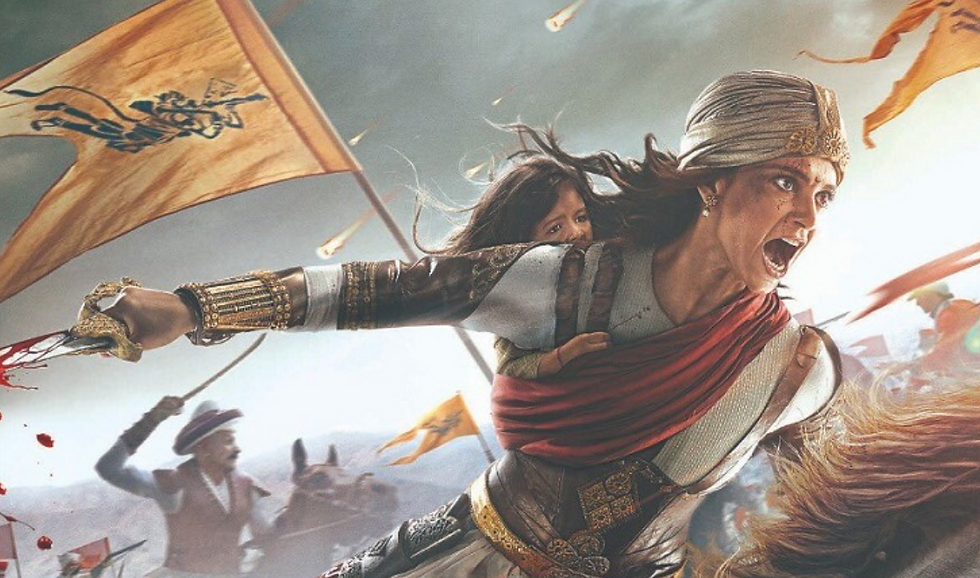Manikarnika: The Queen Of Jhansi Review - Queen Size.
- Filmistaan Online - A Private Entity
- Jan 25, 2019
- 3 min read

The story of the eponymous Jhansi Ki Rani has always been a tale of misguided feminism. Here was a ferocious queen, who took what she wanted, was unabashedly possessive of her land and kicked some British ass. But the history books have remembered her as the anti-feminine. It even prompted that memorable line, “Khub ladi mardaani thi voh, jhansi vali rani thi voh.” That’s why, I was skeptical going into Manikarnika: The Queen of Jhansi. But, this valorisation of Lakshmibai, known as Manu, doesn’t make her ornate, like sanitised Sanjay Leela Bhansali films would have you believe. Here, she’s a warrior-queen, one that dominates all.
And it’s mainly because of leading lady Kangana Ranaut’s domineering performance that Manikarnika sputters to life, grabs you by your patriotic conscience and sturdily doesn’t let go, even as the film drags on. The central character of Manu, later known as Lakshmi, is in each and every frame. The dialogues by Prasoon Joshi are clinically manufactured, so we are in awe of the titular warrior, whose over-bloated screen presence is one of the main reasons that Manikarnika ultimately crashes.
It starts off nicely enough, with Amitabh Bachchan’s booming baritone informing us that what we are about to watch is the stuff of legend. The opening shot that establishes the character is especially exciting. We watch, in awe, as the young Manu strategically controls a tiger. Her flowing curly locks, her blue get-up and her cackling demeanour reminded me of Merida, that force of nature from Disney’s animated film, Brave (2015).
But Manikarnika doesn’t have any of the layering of that film. There, the characters, even the supporting ones, had more of a purpose than to hold up the gargantuan female lead. Here, fine actors like Danny Denzongpa, Jisshu Sengupta, Mohammad Zeeshan Ayyub and Atul Kulkarni are good in the restricted roles they have, but they’re mainly relegated to the background as Kangana spews out one feminist monologue after the other. The only other one who makes an impression is Ankita Lokhande, who is fierce yet playful. Her character development is the only subtle arc throughout the film, and the TV actress who’s making her big screen debut here, runs with it.
It all makes you wonder. Could the iconic falling out between Kangana and co-director Radha Krishna Jagarlamudi for that coveted director’s seat have affected the amount of Lakshmibai on screen? I’d rather not delve into that ugly topic, but it becomes rather obvious that Kangana, who claims to have reshot 70% of the film, focuses the camera’s gaze only on the Rani, a premature decision that directly affects the tonality and atmosphere of the film. It's because of this that the first half of Manikarnika simpers along. It has this over-long love story between Kangana and Jisshu. A pivotal scene in the first half where a child dies is particularly heartbreaking.
But, the emotions are roused to a crescendo when Lakshmi, a new widow, tells her curdled mother-in-law, that she herself can go to Kashi to carry out the rituals of widowhood herself because she’s still betrothed - not to a man, but to a nation. She walks in slow-motion and seats herself on the throne, promptly, not even pausing to take a beat before declaring herself Jhansi’s new queen, with a child wrapped around her shoulders. Kangana’s fiery performance comes through. Her eyes have a fiery anger in them, like she’s seething with rage in each and every scene.
Though Manikarnika has too much of her, she’s engulfs us into the narrative with her unwavering gaze, upright posture and hypnotic sword-wielding. The film roars to life when Kangana yells, blood splattered all over her face, her child crying and crying. In the second half, when we move to the war-zone, the film becomes genuinely convinced of its narrative. Kangana quickly ditches her dreamy eyes and effervescent attitude. Especially awe-inspiring is when she encourages her women to fight the battle with her.
It's stunning to watch women on horseback in a Hindi period film, wielding swords and stabbing people. But, Manikarnika falls into the trappings of a historical way too fast. Its scale is much less than that of Padmaavat (2018), and its sets aren’t nearly opulent enough. Its CGI is flat-out terrible, especially in a climax sequence mainly involving fire. But, on a narrative level, Manikarnika is a force that has a velocity to it. It never stops, and continues flying, because Kangana, with her brilliant performance, propels it forward. Shankar-Ehsaan-Loy's litling Vijayi Bhava and Bharat are also spectacular.
Watch Manikarnika for Rani Ranuat. She’s a revolution, both in front of and behind the camera.











Comments